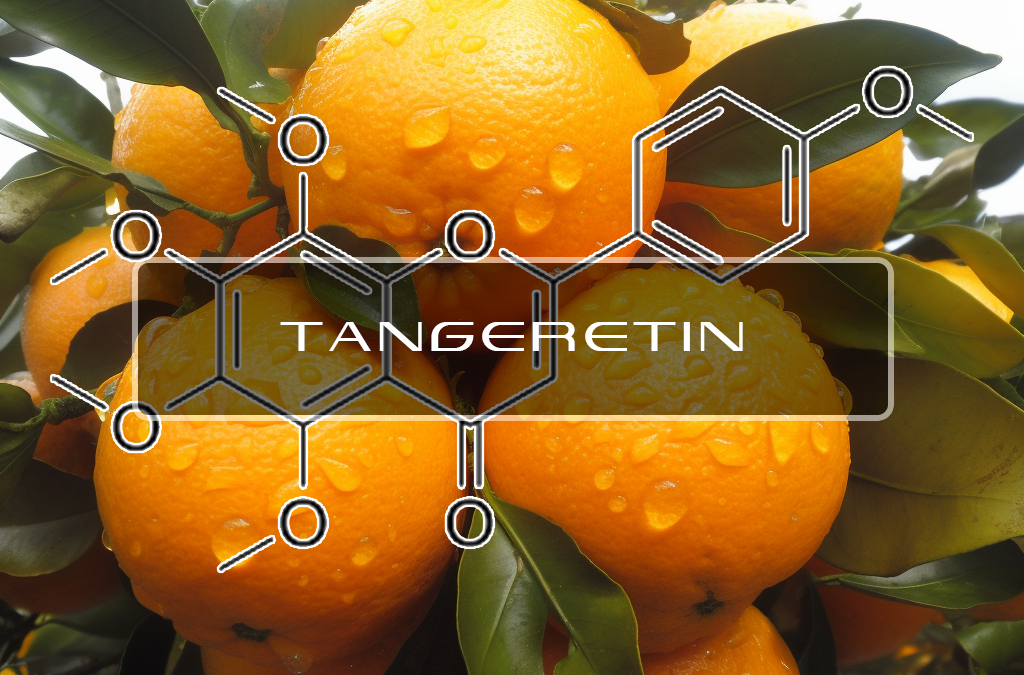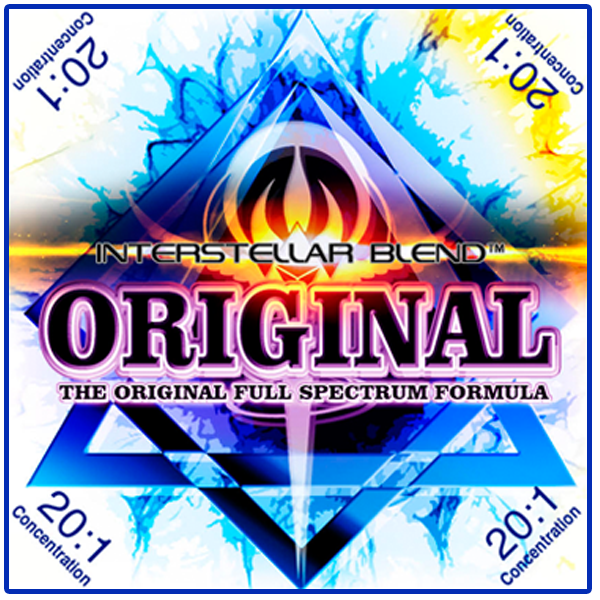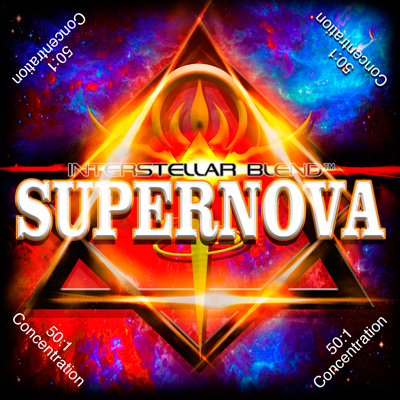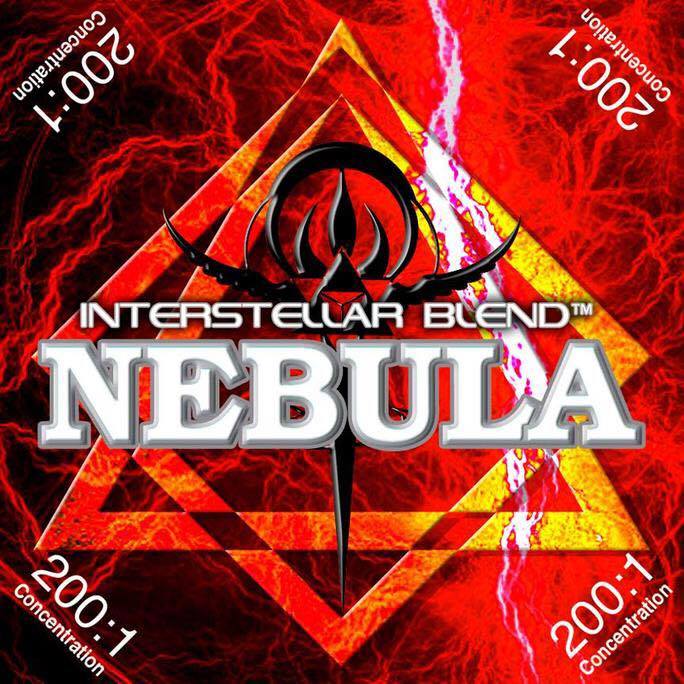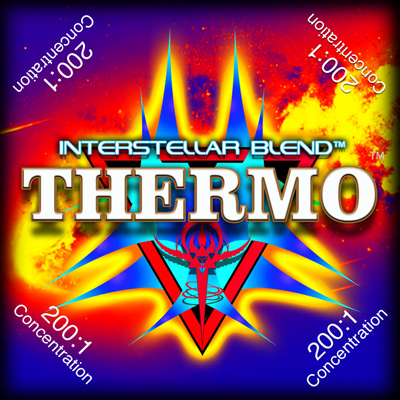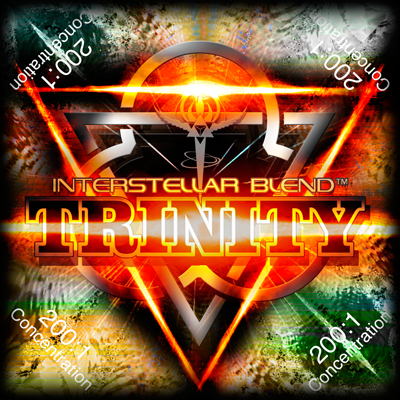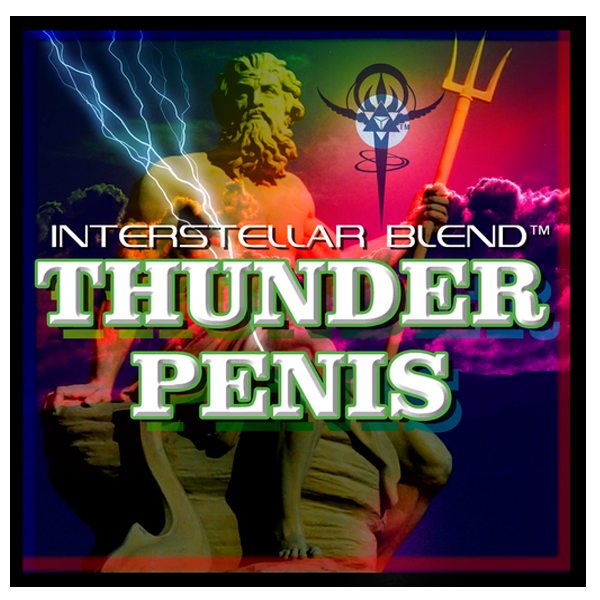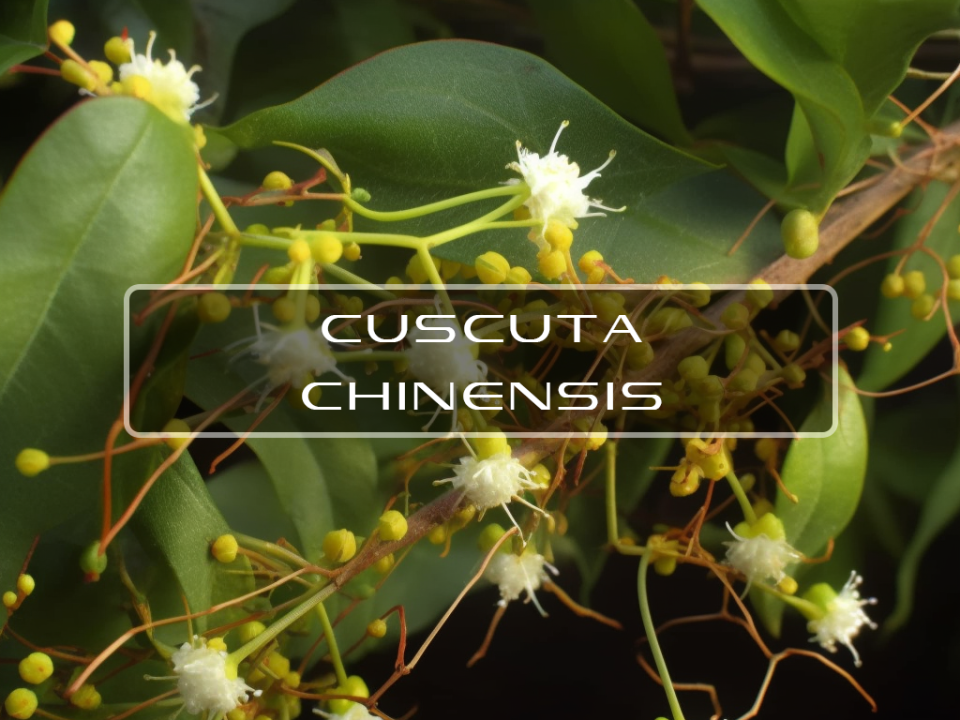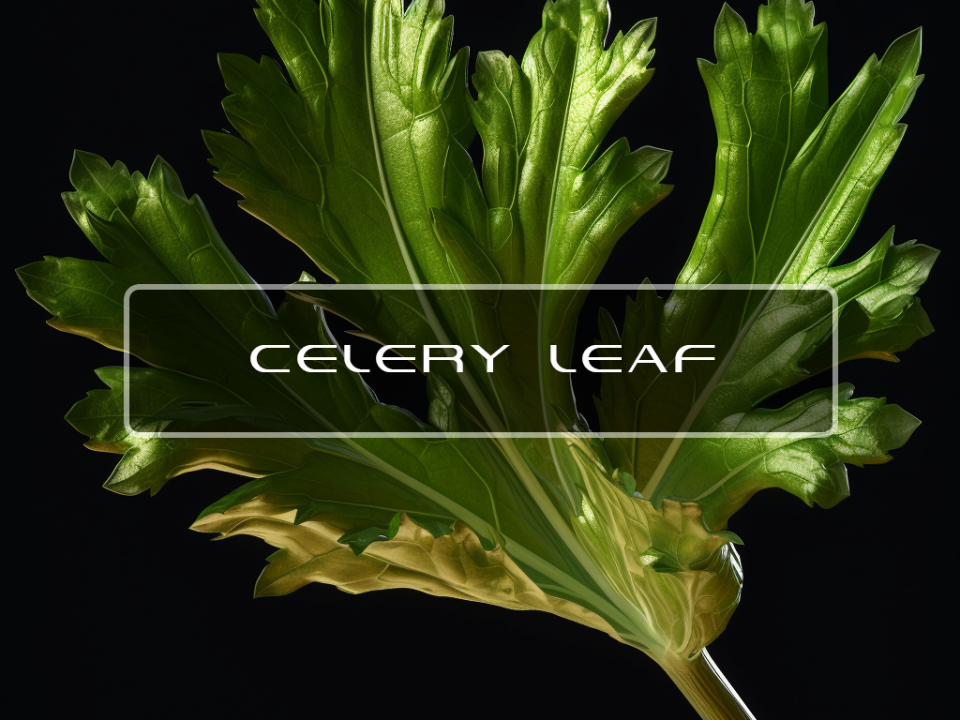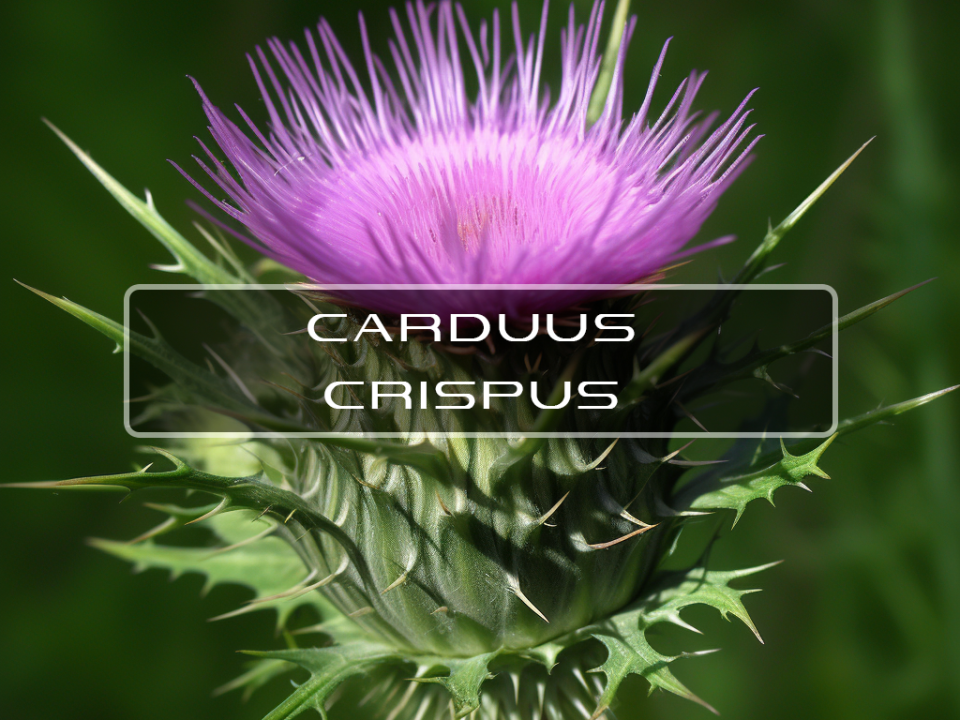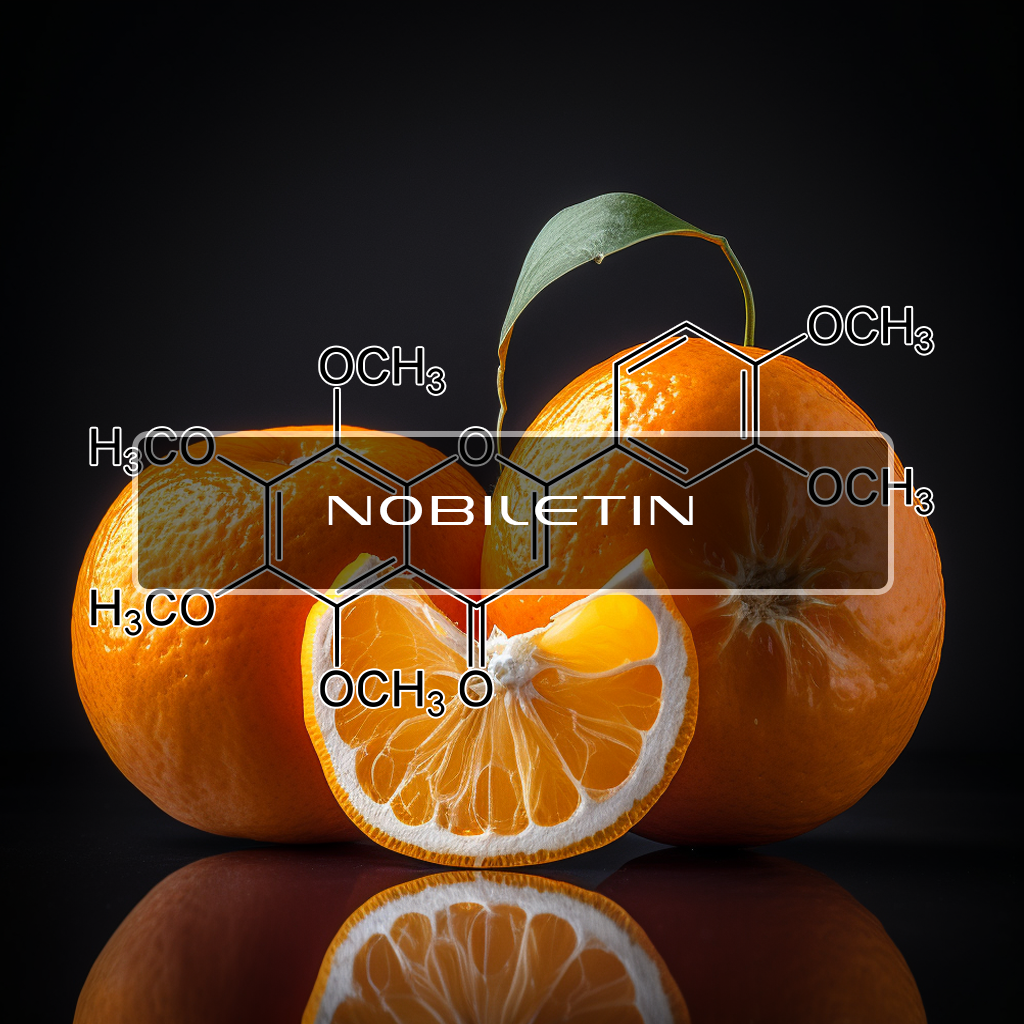
Nobiletin
April 16, 2019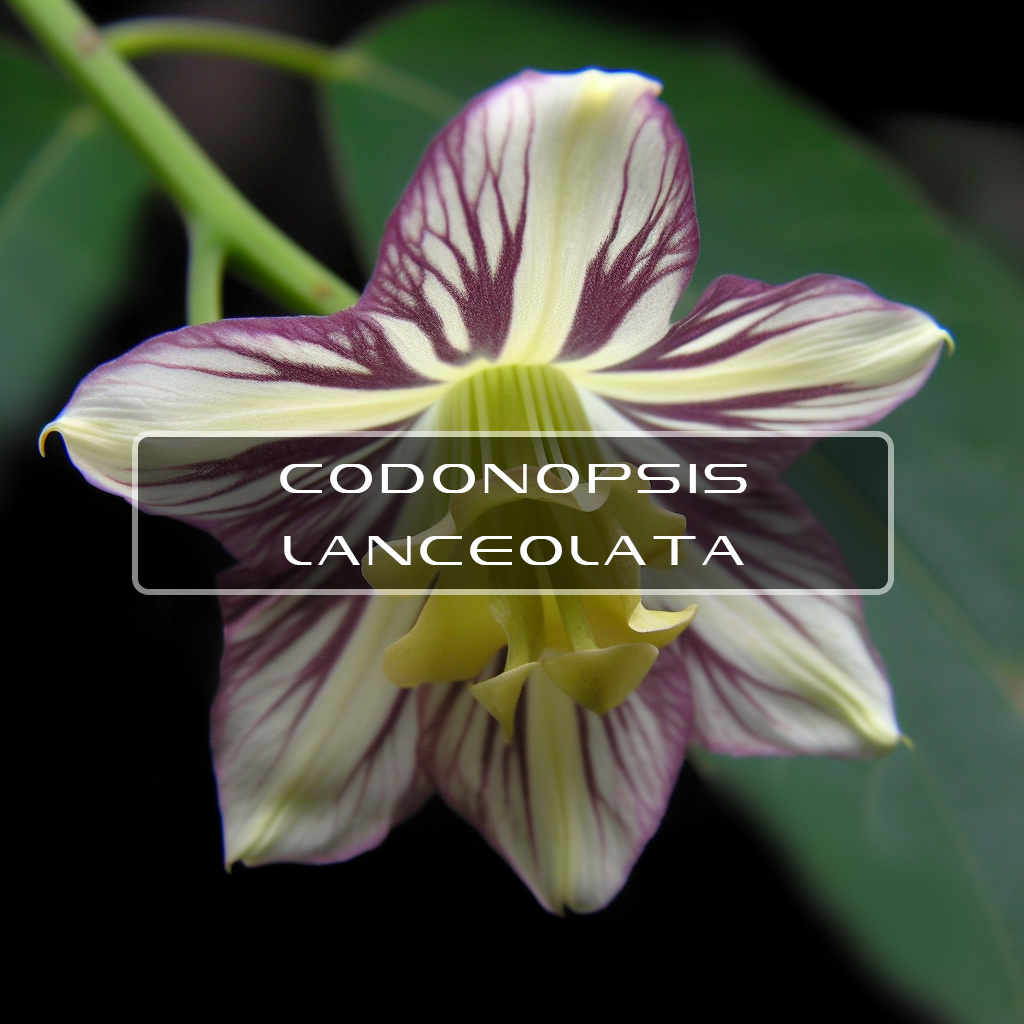
Codonopsis
April 16, 2019Tangeretin
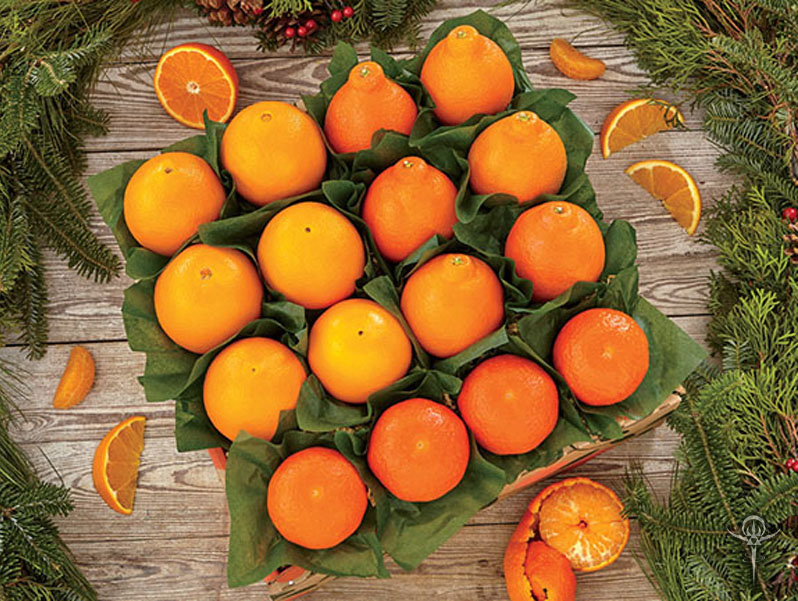
Tangeretin has been showing quite amazing potential as an anti cancer compound, it was able to induce apoptosis within leukemia cells while leaving the normal cells alone.
It was able to remove the tumor cells, and the regular cell cycles progression was able to return back to it's original state.

Tangeretin
Following the chronic oral administration (10 mg/kg/day for 28 days), significant levels of tangeretin were detected in the hypothalamus, striatum and hippocampus (3.88, 2.36 and 2.00 ng/mg, respectively).
These studies, for the first time, give evidence that tangeretin crosses the blood–brain barrier. The significant protection of striato-nigral integrity and functionality by tangeretin suggests its potential use as a neuroprotective agent.
Apoptosis - Certain anti-cancer agents are known to induce apoptosis in human tumour cells. However, these agents are intrinsically cytotoxic against cells of normal tissue origin, including myelocytes and immunocytes.
Here we show that a naturally occurring flavone of citrus origin, tangeretin (5,6,7,8,4'-pentamethoxyflavone), induces apoptosis in human promyelocytic leukaemia HL-60 cells, whereas the flavone showed no cytotoxicity against human peripheral blood mononuclear cells (PBMCs).
Flow cytometric analysis of tangeretin-treated HL-60 cells also demonstrated apoptotic cells with low DNA content and showed a decrease of G1 cells and a concomitant increase of S and/or G2/M cells. Apoptosis was evident after 24 h of incubation with tangeretin, and the tangeretin effect as assessed by DNA fragmentation or growth inhibition was significantly attenuated in the presence of Zn2+, which is known to inhibit Ca(2+)-dependent endonuclease activity.
These results suggest that tangeretin inhibits growth of HL-60 cells in vitro, partially through induction of apoptosis, without causing serious side-effects on immune cells.
Anti-Cancer - In the present study, we investigated the use of a Notch-1 inhibiting compound as a novel therapeutic candidate to regulate radiation-induced EMT in GC cells. According to previous screening, tangeretin, a polymethoxylated flavonoid from citrus fruits was selected as a Notch-1 inhibitor. Tangeretin enhanced the radiosensitivity of GC cells as demonstrated by MTT and colony formation assays.
An in vivo tumor xenograft model confirmed the antimetastasis effect of tangeretin as we observed in vitro. In nude mice, tumor size was considerably diminished by radiation plus tangeretin co-treatment. Tangeretin almost completely inhibited lung metastasis induced by irradiation. Tangeretin may be a novel antimetastatic agent for radiotherapy.
Tangeretin treatment revealed a significant decline in the levels of lipid peroxides, inflammatory cytokines and markers of DNA damage, and a significant improvement in the levels of enzymatic and non-enzymatic antioxidants in the kidney tissue.
Histological and ultrastructural observations also evidenced that the treatment with tangeretin effectively protects the kidney from DMBA-mediated oxidative damage, hence, proving its nephroprotective nature.
Anti-Diabetic - The present study was designed to evaluate the antihyperglycemic potential of tangeretin on the activities of key enzymes of carbohydrate and glycogen metabolism in control and streptozotocin induced diabetic rats.
The daily oral administration of tangeretin (100 mg/kg body weight) to diabetic rats for 30 days resulted in a significant reduction in the levels of plasma glucose, glycosylated hemoglobin (HbA1c) and increase in the levels of insulin and hemoglobin.
These results show that tangeretin modulates the activities of hepatic enzymes via enhanced secretion of insulin and decreases the blood glucose in streptozotocin induced diabetic rats by its antioxidant potential.
Anti-Inflammatory - Tangeretin, a flavonoid from citrus fruit peels, has been proven to play an important role in anti-inflammatory responses and neuroprotective effects in several disease models, but further study is necessary for elucidating the detailed mechanisms of these effects.
In this study, they examined the anti-inflammatory effect of tangeretin in lipopolysaccharide (LPS)-stimulated microglia. They first observed that tangeretin inhibited LPS-induced production of nitric oxide, tumor necrosis factor alpha, interleukin (IL)-6, and IL-1β, as well as LPS-induced mRNA expression of inducible nitric oxide synthases and cytokines.
They further demonstrated the antioxidant effect of tangeretin by showing that tangeretin inhibited reactive oxygen species production and p47phox phosphorylation, while enhancing the expression of heme oxygenase-1 and the DNA binding activity of nuclear factor-erythroid 2-related factor 2 to the antioxidant response element in LPS-stimulated microglia. Taken together, the results of the present study demonstrate that tangeretin possesses a potent anti-inflammatory and antioxidant effect in microglia.

Related Products
- 5-DemethylTangeretin Is More Potent Than Tangeretin In Inhibiting Dimethylbenz (A) Anthracene (Dmba)/12-O-
Tetradecanoylphorbol-13- Acetate (Tpa)-Induced Skin … - A Safety Study Of Oral Tangeretin And Xanthohumol Administration To Laboratory Mice
- A Tangeretin Derivative Inhibits The Growth Of Human Prostate Cancer Lncap Cells By Epigenetically Restoring P21 Gene Expression And Inhibiting Cancer Stem-Like …
- Abstract Lb-167: A Novel Metabolite Of Citrus Tangeretin Epigenetically Inhibits The Growth Of Human Prostate Cancer Cells
- Anti-Inflammatory And Antioxidant Mechanism Of Tangeretin In Activated Microglia
- Anti-Inflammatory Properties Of Tangeretin, 5-DemethylTangeretin And Their Primary Metabolites
- Antimicrobial Activity Of Nobiletin And Tangeretin Against Pseudomonas
- Antioxidant Protection Of Nobiletin, 5-Demethylnobiletin, Tangeretin, And 5-DemethylTangeretin From Citrus Peel In Saccharomyces Cerevisiae
- Antitumor Efficacy Of Tangeretin By Targeting The Oxidative Stress Mediated On 7, 12-Dimethylbenz (A) Anthracene-Induced Proliferative Breast Cancer In Sprague …
- Apigenin And Tangeretin Enhance Gap Junctional Intercellular Communication In Rat Liver Epithelial Cells
- Application Of Emulsion-Based Delivery System To Enhance Bioavailability And Efficacy Of Tangeretin
- Assessing The In Vitro Bioavailability Of Tangeretin And Its Derivatives In Caco-2 Cell Model
- Attenuation Of Tert-Butyl Hydroperoxide (T-Bhp)-Induced Oxidative Damage In Hepg2 Cells By Tangeretin: Relevance Of The Nrf2–Are And Mapk Signaling …
- Biotransformation Of The Citrus Flavone Tangeretin In Rats. Identification Of Metabolites With Intact Flavane Nucleus
- Blockade Of Stat3 Signaling Contributes To Anticancer Effect Of 5-Acetyloxy-6, 7, 8, 4′-Tetra-Methoxyflavone, A Tangeretin Derivative, On Human Glioblastoma …
- Cardioprotective Efficiency Of Tangeretin Against Heart Failure Induced By Isoproterenol In Rats
- Carnosic Acid, Tangeretin, And Ginkgolide-B Anti-Neoplastic Cytotoxicity In Dual Combination With Dexamethasone-[Anti-Egfr] In Pulmonary Adenocarcinoma (A549 …
- Cellular Metabolic Energy Modulation By Tangeretin In 7, 12-Dimethylbenz (A) Anthracene-Induced Breast Cancer
- Characterization And Bioaccessibility Of Tangeretin-Loaded Zein Colloidal System
- Chemotherapeutic Effect Of Tangeretin, A Polymethoxylated Flavone Studied In 7, 12-Dimethylbenz (A) Anthracene Induced Mammary Carcinoma In Experimental Rats
- Citrus Flavone Tangeretin Inhibits Leukaemic Hl-60 Cell Growth Partially Through Induction Of Apoptosis With Less Cytotoxicity On Normal Lymphocytes
- Citrus Peel Polymethoxyflavones Nobiletin And Tangeretin Suppress Lps-And Ige-Mediated Activation Of Human Intestinal Mast Cells
- Citrus Tangeretin Improves Skeletal Muscle Mitochondrial Biogenesis Via Activating The Ampk-Pgc1-Α Pathway In Vitro And In Vivo: A Possible Mechanism For Its …
- Citrus Tangeretin Reduces The Oxidative Stress Of The Myocardium, With The Potential For Reducing Fatigue Onset And Myocardial Damage
- Combination Of Cisplatin And Tangeretin Induces Apoptosis In Cisplatin-Resistant Human Ovarian Cancer Cells Through Modulation Of Phospho-Akt And Its Downstream …
- Combination Of Tangeretin And 5-Fluorouracil Modulates Cell Cycle And Induce Apoptosis On Widr Cells
- Combinational Applicaton Of Silybin And Tangeretin Attenuates The Progression Of Non-Alcoholic Steatohepatitis (Nash) In Mice Via Modulating Lipid Metabolism
- Comparative Binding Studies Of Curcumin And Tangeretin On Up-Stream Elements Of Nf-Kb Cascade: A Combined Molecular Docking Approach
- Corrigendum To” Tangeretin, A Citrus Pentamethoxyflavone, Antagonizes Abcb1-Mediated Multidrug Resistance By Inhibiting Its Transport Function”[Pharm. Res. 110 …
- Cytoprotective Effect Of Tangeretin In Hydrogen Peroxyde-Inducedoxydative Stress On Human Umbilical Vein Endothelial Cells (Huvecs)
- Determination Of Tangeretin In Rat Plasma By Lc-Electrospray-Ion Trap Ms
- Determination Of Tangeretin In Rat Plasma: Assessment Of Its Clearance And Absolute Oral Bioavailability
- Dietary Flavonoid Tangeretin Induces Reprogramming Of Epithelial To Mesenchymal Transition In Prostate Cancer Cells By Targeting The Pi3K/Akt/Mtor Signaling …
- Effect Of Pomegranate Extract And Tangeretin On Specific Pathways In The Rat Breast Cancer Model Induced With Dmba
- Effect Of Tangeretin On Ovalbumin-Provoked Allergic Respiratory Asthma In Swiss Albino Mice
- Effect Of Tangeretin, A Polymethoxylated Flavone On Glucose Metabolism In Streptozotocin-Induced Diabetic Rats
- Effective Hydroxylation Of Tangeretin From Citrus Peel (Chenpi) By Edible Acids And Its Improvement In Antioxidant And Anti-Lipase Activities
- Effects Of Citrus Polymethoxy Flavone Tangeretin On Cancer Cells Inflammatory Pathways
- Encapsulation Of Tangeretin Into Debranched-Starch Inclusion Complexes: Structure, Properties And Stability
- Enhanced Anti‐Inflammatory Activities By The Combination Of Luteolin And Tangeretin
- Enhancement Of Physical Stability And Bioaccessibility Of Tangeretin By Soy Protein Isolate Addition
- Evaluation Of The Effects Of Swainsonine, Captopril, Tangeretin And Nobiletin On The Biological Behaviour Of Brain Tumour Cells In Vitro
- Evidence For Tangeretin O-Demethylation By Rat And Human Liver Microsomes
- Extraction Of Nobiletin And Tangeretin From Citrus Depressa Hayata By Supercritical Carbon Dioxide With Ethanol As Modifier
- Extraction Of Nobiletin And Tangeretin From Peels Of Shekwasha And Ponkan Using [C2Mim][(Meo)(H)Po2] And Centrifugation
- Extraction Of Nobiletin And Tangeretin With Antioxidant Activity From Peels Of Citrus Poonensis Using Liquid Carbon Dioxide And Ethanol Entrainer
- Flavonoids (Apigenin, Tangeretin) Counteract Tumor Promoter-Induced Inhibition Of Intercellular Communication Of Rat Liver Epithelial Cells
- Hesperidin, Nobiletin, And Tangeretin Are Collectively Responsible For The Anti-Neuroinflammatory Capacity Of Tangerine Peel (Citri Reticulatae Pericarpium)
- Identification Of A Novel Biomarker In Tangeretin‑Induced Cell Death In Ags Human Gastric Cancer Cells
- Improving Bioavailability Of 5-Hydroxy Tangeretin By Food Grade Nanoemulsions
- In Vitro And In Vivo Anti-Cancer Activity Of Tangeretin Against Colorectal Cancer Was Enhanced By Emulsion-Based Delivery System
- In Vitro Metabolism Of Genistein And Tangeretin By Human And Murine Cytochrome P450S
- Influence Of Tangeretin On Tamoxifen’S Therapeutic Benefit In Mammary Cancer
- Inhibition Of Cancer Cell Growth By Tangeretin Flavone In Drug-Resistant Mda-Mb-231 Human Breast Carcinoma Cells Is Facilitated Via Targeting Cell Apoptosis, Cell …
- Inhibition Of Mild Steel Corrosion In 1 M Hcl Medium By Tangeretin
- Inhibition Of Tamoxifen’S Therapeutic Benefit By Tangeretin In Mammary Cancer
- Inhibitory Effect On Lipid Accumulation: Comparison Between Two Polymethoxylflavones, Tangeretin And Nobiletin, And One Flavonoid, Hesperetin, In 3T3-L1 …
- Inhibitory Effects Of 5-Hydroxy Tangeretin On Human Non-Small Cell Lung Cancer Cells
- Interaction Between Tangeretin And Ovalbumin To Reduce The Allergic Effects Of Ovalbumin
- Is There Any Protective Effect Of Pomegranate And Tangeretin On The Dmba-Induced Rat Breast Cancer Model?
- Lack Of Correlation Between In Vitro And In Vivo Studies On The Effects Of Tangeretin And Tangerine Juice On Midazolam Hydroxylation
- Lc-Ms Analysis Of Metabolites Of Tangeretin In Hamster
- Modulation Of Hepg2 Cell Net Apolipoprotein B Secretion By The Citrus Polymethoxyflavone, Tangeretin
- Neuroprotective Effects Of Citrus Fruit-Derived Flavonoids, Nobiletin And Tangeretin In Alzheimer’S And Parkinson’S Disease
- Nobiletin And Tangeretin Ameliorate Scratching Behavior In Mice By Inhibiting The Action Of Histamine And The Activation Of Nf-Κb, Ap-1 And P38
- Pharmacokinetic Study Of Nobiletin And Tangeretin In Rat Serum By High-Performance Liquid Chromatography− Electrospray Ionization− Mass Spectrometry
- Pharmacokinetics, Bioavailability, Tissue Distribution And Excretion Of Tangeretin In Rat
- Ph-Sensitive Tangeretin-Zno Quantum Dots Exert Apoptotic And Anti-Metastatic Effects In Metastatic Lung Cancer Cell Line
- Polymethoxy Flavonoids, Nobiletin And Tangeretin, Prevent Lipopolysaccharide-Induced Inflammatory Bone Loss In An Experimental Model For Periodontitis
- Polymethoxyflavonoids Tangeretin And Nobiletin Increase Glucose Uptake In Murine Adipocytes
- Pro-Apoptotic Effects Of The Novel Tangeretin Derivate 5-Acetyl-6, 7, 8, 4′-TetramethylnorTangeretin On Mcf-7 Breast Cancer Cells
- Proteomics Analysis Of Tangeretin-Induced Apoptosis Through Mitochondrial Dysfunction In Bladder Cancer Cells
- Quantification Of Nobiletin And Tangeretin In Citrus By Micellar Electrokinetic Capillary Chromatography
- Rapid Quantification Of Nobiletin And Tangeretin In Citrus Peel Extractions By Raman Spectroscopy
- Regulation Of Adipocytokine Secretion And Adipocyte Hypertrophy By Polymethoxyflavonoids, Nobiletin And Tangeretin
- Research Article Cardioprotective Efficiency Of Tangeretin Against Heart Failure Induced By Isoproterenol In Rats
- Role Of Tangeretin As A Potential Bioavailability Enhancer For Silybin: Pharmacokinetic And Pharmacological Studies
- Safety Evaluation Of Tangeretin And The Effect Of Using Emulsion-Based Delivery System: Oral Acute And 28-Day Sub-Acute Toxicity Study Using Mice
- Simultaneous Quantification Of Paeoniflorin, Nobiletin, Tangeretin, Liquiritigenin, Isoliquiritigenin, Liquiritin And Formononetin From Si‐Ni‐San Extract In Rat Plasma And …
- Stimulation Effect Of Wide Type Cftr Chloride Channel By The Naturally Occurring Flavonoid Tangeretin
- Synergistic Anti-Inflammatory Effects Of Luteolin And Tangeretin On Lipopolysaccharide-Stimulated Raw 264.7 Cells
- Synergistic Inhibition Of Lung Cancer Cell Growth By Tangeretin And Atorvastatin
- Synthesis And Biological Evaluation Of A Series Of Tangeretin-Derived Chalcones
- Synthetic Experiments In The Benzopyrone Series: Part Xi. Conversion Of Carthamidin And Isocarthamidin Into Herbacetin And Tangeretin
- Tangeretin Alleviates Cisplatin-Induced Acute Hepatic Injury In Rats: Targeting Mapks And Apoptosis
- Tangeretin Alters Neuronal Apoptosis And Ameliorates The Severity Of Seizures In Experimental Epilepsy-Induced Rats By Modulating Apoptotic Protein Expressions …
- Tangeretin Ameliorates Oxidative Stress In The Renal Tissues Of Rats With Experimental Breast Cancer Induced By 7, 12-Dimethylbenz [A] Anthracene
- Tangeretin Ameliorates Podocyte Injury Through Blocking Epithelial To Mesenchymal Transition In High Glucose-Exposed Podocytes And Diabetic Kidneys (P06-009 …
- Tangeretin Ameliorates Renal Failure Via Regulating Oxidative Stress, Nf-Κb–Tnf-Α/Inos Signalling And Improves Memory And Cognitive Deficits In 5/6 Nephrectomized …
- Tangeretin And 3′, 4′, 3, 5, 6, 7, 8-Heptamethoxyflavone Decrease Insulin Resistance, Fat Accumulation And Oxidative Stress In Mice Fed High-Fat Diet
- Tangeretin And Its Metabolite 4′‐Hydroxytetramethoxyflavone Attenuate Egf‐Stimulated Cell Cycle Progression In Hepatocytes; Role Of Inhibition At The Level Of Mtor …
- Tangeretin And Nobiletin Induce G1 Cell Cycle Arrest But Not Apoptosis In Human Breast And Colon Cancer Cells
- Tangeretin Attenuates Cisplatin-Induced Renal Injury In Rats: Impact On The Inflammatory Cascade And Oxidative Perturbations
- Tangeretin Attenuates Lipopolysaccharide-Induced Acute Lung Injury Through Notch Signaling Pathway Via Suppressing Th17 Cell Response In Mice
- Tangeretin Derivative, 5-Acetyloxy-6, 7, 8, 4′-Tetramethoxyflavone Induces G2/M Arrest, Apoptosis And Autophagy In Human Non-Small Cell Lung Cancer Cells In Vitro …
- Tangeretin Enhances Radiosensitivity And Inhibits The Radiation-Induced Epithelial-Mesenchymal Transition Of Gastric Cancer Cells
- Tangeretin Enhances Sensitivity Of Human Pancreatic Cancer Cells To Gemcitabine Through Targeting The Reprogramming Of Stemness.
- Tangeretin Exerts Anti-Neuroinflammatory Effects Via Nf-Κb Modulation In Lipopolysaccharide-Stimulated Microglial Cells
- Tangeretin From Citrus Reticulate Inhibits Respiratory Syncytial Virus Replication And Associated Inflammation In Vivo
- Tangeretin Has Anti-Asthmatic Effects Via Regulating Pi3K And Notch Signaling And Modulating Th1/Th2/Th17 Cytokine Balance In Neonatal Asthmatic Mice
- Tangeretin Improves Glucose Uptake In A Coculture Of Hypertrophic Adipocytes And Macrophages By Attenuating Inflammatory Changes
- Tangeretin Induces Caspase Dependent Apoptosis And G2/M Arrest In The Erythroleukemia Cell Line K562 In Vitro.
- Tangeretin Induces Cell Cycle Arrest And Apoptosis Through Upregulation Of Pten Expression In Glioma Cells
- Tangeretin Induces Cell-Cycle G1 Arrest Through Inhibiting Cyclin-Dependent Kinases 2 And 4 Activities As Well As Elevating Cdk Inhibitors P21 And P27 In Human …
- Tangeretin Inhibits Extracellular‐Signal‐Regulated Kinase (Erk) Phosphorylation
- Tangeretin Inhibits Hepatocellular Carcinoma Proliferation And Migration By Promoting Autophagy-Related Beclin1
- Tangeretin Inhibits High Glucose-Induced Extracellular Matrix Accumulation In Human Glomerular Mesangial Cells
- Tangeretin Inhibits Il-12 Expression And Nf-Κb Activation In Dendritic Cells And Attenuates Colitis In Mice
- Tangeretin Inhibits Il-1Beta-Induced Cyclooxygenase-2 Expression Through Down-Regulating Akt, P38Mapk And Jnk Activationin Human Lung Carcinoma Cells
- Tangeretin Inhibits Il-1Β Induced Proliferation Of Rheumatoid Synovial Fibroblasts And The Production Of Cox-2, Pge2 And Mmps Via Modulation Of P38 Mapk/Erk/Jnk …
- Tangeretin Inhibits Neurodegeneration And Attenuates Inflammatory Responses And Behavioural Deficits In 1-Methyl-4-Phenyl-1, 2, 3, 6-Tetrahydropyridine (Mptp) …
- Tangeretin Inhibits Oxidative Stress And Inflammation Via Upregulating Nrf-2 Signaling Pathway In Collagen-Induced Arthritic Rats
- Tangeretin Inhibits Streptozotocin‐Induced Cell Apoptosis Via Regulating Nf‐Κb Pathway In Ins‐1 Cells
- Tangeretin Inhibits The Proliferation Of Human Breast Cancer Cells Via Cyp1A1/Cyp1B1 Enzyme Induction And Cyp1A1/Cyp1B1–Mediated Metabolism To The Product …
- Tangeretin Mitigates L-Name-Induced Ventricular Dysfunction And Remodeling Through At1R/Perk1/2/Pjnk Signaling Pathway In Rats
- Tangeretin Prevents Prostate Cancer Cell Proliferation And Induces Apoptosis Via Activation Of Notch Signalling And Regulating The Androgen Receptor (Ar) Pathway And …
- Tangeretin Promotes Regulatory T Cell Differentiation By Inhibiting Notch1/Jagged1 Signaling In Allergic Rhinitis
- Tangeretin Protects Against Ethanol-Induced Injury In Gastric Mucosa Of Rats Via Its Antioxidants And Anti-Inflammatory Activity
- Tangeretin Protects Human Brain Microvascular Endothelial Cells Against Oxygen‐Glucose Deprivation‐Induced Injury
- Tangeretin Protects Renal Tubular Epithelial Cells Against Experimental Cisplatin Toxicity
- Tangeretin Reduces Ultraviolet B (Uvb)-Induced Cyclooxygenase-2 Expression In Mouse Epidermal Cells By Blocking Mitogen-Activated Protein Kinase (Mapk) …
- Tangeretin Regulates Platelet Function Through Inhibition Of Phosphoinositide 3-Kinase And Cyclic Nucleotide Signaling
- Tangeretin Sensitises Human Lung Cancer Cells To Trailinduced Apoptosis Via Ros-Jnk/Erk-Chop Pathwaymediated Up-Regulation Of Death Receptor 5
- Tangeretin Sensitizes Cisplatin-Resistant Human Ovarian Cancer Cells Through Downregulation Of Phosphoinositide 3-Kinase/Akt Signaling Pathway
- Tangeretin Sensitizes Sgs1-Deficient Cells By Inducing Dna Damage
- Tangeretin Stimulates Glucose Uptake Via Regulation Of Ampk Signaling Pathways In C2C12 Myotubes And Improves Glucose Tolerance In High-Fat Diet-Induced Obese …
- Tangeretin Suppresses Il-1Β-Induced Cyclooxygenase (Cox)-2 Expression Through Inhibition Of P38 Mapk, Jnk, And Akt Activation In Human Lung Carcinoma Cells
- Tangeretin Synergistically Enhances Odorant-Induced Increases In Camp And Calcium Levels And Creb Phosphorylation In Non-Neuronal 3T3-L1 Cells
- Tangeretin Synergizes With Imatinib In Inhibiting Growth Of Bcr-Abl Positive K562 Erythroleukemia Cells In An Erk-Dependent Way.
- Tangeretin Triggers Melanogenesis Through The Activation Of Melanogenic Signaling Proteins And Sustained Extracellular Signal-Regulated Kinase In B16/F10 Murine …
- Tangeretin, A Citrus Flavonoid Attenuates Oxidative Stress And Protects Hepatocellular Architecture In Rats With 7, 12-Dimethylbenz (A) Anthracene Induced Experimental …
- Tangeretin, A Citrus Flavonoid, Inhibits Pgdf-Bb-Induced Proliferation And Migration Of Aortic Smooth Muscle Cells By Blocking Akt Activation
- Tangeretin, A Citrus Pentamethoxyflavone, Antagonizes Abcb1-Mediated Multidrug Resistance By Inhibiting Its Transport Function
- Tangeretin, A Citrus Pentamethoxyflavone, Exerts Cytostatic Effect Via P53/P21 Up-Regulation And Suppresses Metastasis In 7, 12-Dimethylbenz (Α) Anthracene-Induced …
- Tangeretin, A Citrus Polymethoxyflavonoid, Induces Apoptosis Of Human Gastric Cancer Ags Cells Through Extrinsic And Intrinsic Signaling Pathways
- Tangeretin, A Polymethoxylated Flavone, Modulates Lipid Homeostasis And Decreases Oxidative Stress By Inhibiting Nf-Κb Activation And Proinflammatory Cytokines In …
- Tangeretin, An Extract From Citrus Peels, Blocks Cellular Entry Of Arenaviruses That Cause Viral Hemorrhagic Fever
- Tangeretin-Assisted Platinum Nanoparticles Enhance The Apoptotic Properties Of Doxorubicin: Combination Therapy For Osteosarcoma Treatment
- Tangeretin-Loaded Protein Nanoparticles Fabricated From Zein/Β-Lactoglobulin: Preparation, Characterization, And Functional Performance
- The Citrus Methoxyflavone Tangeretin Affects Human Cell-Cell Interactions
- The Flavonoid Tangeretin Activates The Unfolded Protein Response And Synergizes With Imatinib In The Erythroleukemia Cell Line K562
- The Flavonoid Tangeretin Inhibits Invasion Of Mo4 Mouse Cells Into Embryonic Chick Heartin Vitro
- The Improvement Of Doxorubicin Activity On Breast Cancer Cell Lines By Tangeretin Through Cell Cycle Modulation
- The Inhibitory Effect Of Tangeretin On Hunman Hepatocarcinoma Cell Line Smmc-7721
- The Leaves Of Mediterranean Mandarin Could Be Used As An Important Source Of Hesperidin, Nobiletin And Tangeretin.: S20P04
- The Polymethoxylated Flavone, Tangeretin Improves Cognitive Memory In Rats Experiencing A Single Episode Of Prolonged Post-Traumatic Stress
- Tissue Distribution And Neuroprotective Effects Of Citrus Flavonoid Tangeretin In A Rat Model Of Parkinson’S Disease
- Treatment Of Metastatic Melanoma B16F10 By The Flavonoids Tangeretin, Rutin, And Diosmin

